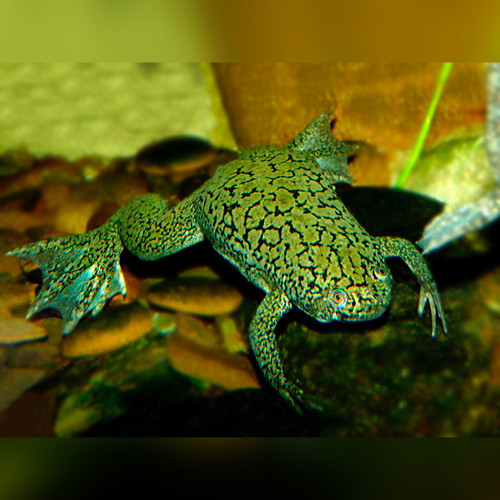Our Guide To Keeping African Butterfly Fish
-
About Fish Species:
- Scientific name: Pantodon buchholzi
- Common name: African Butterfly Fish
- Family: Pantodontidae
- Origin: West and Central Africa, particularly in slow-moving rivers and creeks
- Adult length: 10-13 cm
- Lifespan: 5 years
-
Tank Setup:
- African Butterfly Fish prefer a well-planted tank with floating plants to provide cover. A minimum tank size of 75L is recommended for a single fish.
- Ensure the tank has a tightly fitting lid, as they are known to be excellent jumpers.
- Use dim lighting to mimic their natural habitat and create shaded areas with floating vegetation.
-
Water Parameters:
- African Butterfly Fish thrive in slightly acidic to neutral water with a pH range of 6.0 to 7.5.
- Maintain a water temperature between 24 to 28°C (75 to 82°F).
-
Filtration and Water Flow:
- A gentle water flow is ideal for these fish, as they prefer calm waters. Use a filter that provides minimal water movement.
-
Diet:
- African Butterfly Fish are carnivores and prefer a diet of live foods. Offer them insects, small fish, and invertebrates such as crickets, mealworms, and bloodworms.
- They can also be trained to accept frozen or freeze-dried foods, but live foods should remain a staple in their diet.
-
Tank mates:
- African Butterfly Fish are best kept in a species-only tank or with other peaceful fish that inhabit the lower and middle levels of the tank to avoid competition for food.
- Avoid keeping them with small fish that may be seen as prey or with aggressive species that may stress or harm them.
-
Behavior and Compatibility:
- African Butterfly Fish are surface dwellers and spend most of their time near the top of the tank. They are generally peaceful but can be territorial with other surface-dwelling fish.
- They are solitary and do not require the company of conspecifics, but can coexist with other non-aggressive species.
- Ensure there are plenty of hiding spots and floating plants to help them feel secure.







